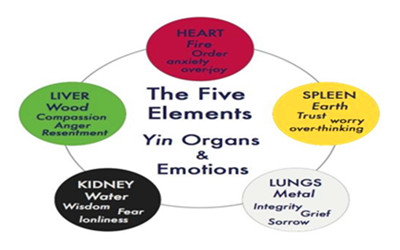
Chinese Five Elements

Along with these generating and overcoming forces, the five elements of the Chinese Zodiac are also correlated with direction, color, season, body parts, tastes, and senses. Wood, for example correlates to the direction East, the season of Spring, the color blue or green, the taste of sour, the sense of sight, and the body parts gall bladder, liver and ring finger. The other four elements likewise have their own correlations.
The characteristics of the five elements, metal, wood, fire, water and Earth, impact the twelve animals of the Chinese Zodiac by assigning different characteristics to the animals. Since the twelve animals of the Chinese Zodiac actually represent a period of time, in this case a year (the 12 branches), assigning one of the five elements to each of the twelve years (12 branches) actually creates 60 different combinations. Rather than operating in 12-year cycles, the Chinese Zodiac is actually based on a system of 60-year cycles.
Another important concept in Chinese philosophy is Yin and Yang or the ability to compare as well as balance that which exists in life such as day and night, and femininity and masculinity. The concepts of Yin and Yang also affect the five elements and the Chinese Zodiac by assigning opposing forces or characteristics to each. There’s a Yin wood and a Yang wood, a Yin metal and a Yang metal, and so on.
When Yin and Yang are applied to the five elements, there now becomes a total of ten elements or 10 stems, with each stem having an alternate reading. As it relates to the Chinese Zodiac, odd years are Yin years and even years are Yang.
Much of Chinese philosophy is built around the belief in the five elements and their abilities to interact with and create relationships between natural phenomena. The five elements have been part of Chinese culture almost from the beginning.







 Ask Questions ?
Ask Questions ?